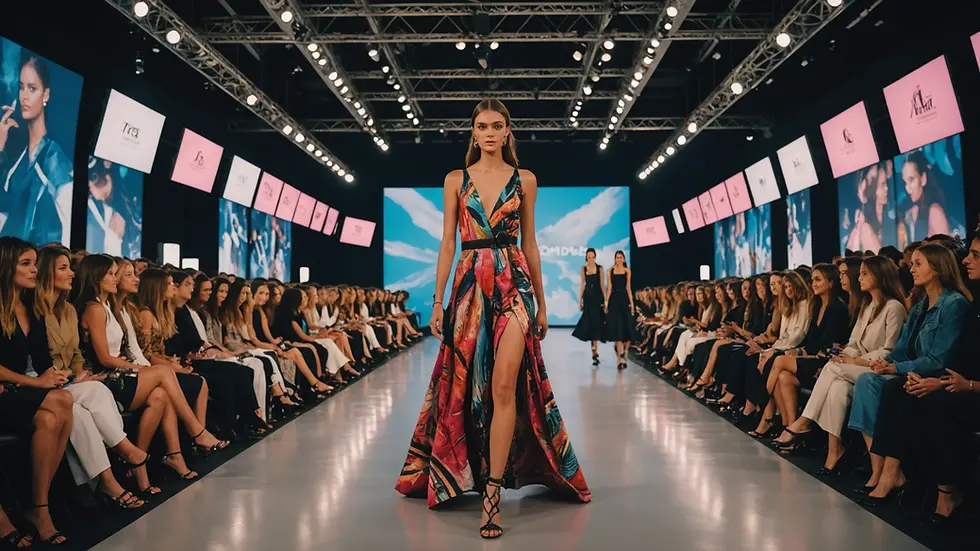Harmonizing Style and Sound: Exploring the Fusion of Music and Fashion in Today's Pop Culture
- Lisa Walker
- Jan 22
- 4 min read
In recent years, the blending of music and fashion has transformed into an exciting arena for creativity and cultural expression. From eye-catching runway shows to vibrant music videos, how artists showcase themselves has become a key part of their identity. This fusion is more than a passing fad; it reflects the dynamic narrative of pop culture, where style and sound combine to create unforgettable experiences.
The bond between music and fashion has a rich history. From the flamboyant glam rock of the 1970s to the edgy punk looks of the 1980s, musicians have always played a significant role in shaping fashion trends, and vice versa. Today, this connection is more powerful than ever, as a global audience seeks authenticity and creativity from their favorite artists.
Historical Context: The Evolution of Music and Fashion
Music genres have historically driven fashion trends. For instance, the 1960s brought forth the distinct styles of mods and rockers, reflecting their musical tastes. The grunge movement in the 1990s revolutionized fashion by making comfort and rebellion the focus rather than polished appearances. According to a survey by Vogue, about 80% of fashion trends can be traced back to musical influences.
Every decade presents a fresh wave of crossover between music and style, showing that trends are cyclical. Modern artists are not just inspired by the past but actively reinterpret and refresh classic styles, ensuring that both worlds remain vibrant and interconnected.
The Role of Iconic Fashion Moments in Music
Musical icons such as David Bowie and Madonna have leveraged fashion to craft their unique identities. Bowie's eclectic costumes in the 1970s and Madonna's provocative outfits have significantly shaped their music careers and left a lasting legacy on fashion. For example, Bowie's Ziggy Stardust persona introduced androgynous styles, pushing boundaries of gender expression in both music and fashion.
Fashion enhances storytelling in music. An artist's outfit can symbolize profound meanings. For instance, during the Super Bowl halftime show, Shakira and Jennifer Lopez wore outfits that celebrated their Latin heritage, visually enriching their performance and connecting with millions of viewers.
Contemporary Influences: Artists as Fashion Icons
Today’s musicians like Billie Eilish, Lizzo, and Harry Styles are not just performers; they are fashion trendsetters. Eilish’s oversized streetwear and bold colors have contributed to a shift toward comfortable clothing that makes a statement. Reports indicate that her style has influenced a 30% rise in sales of baggy clothing among younger demographics.
Lizzo's fashion choices promote body positivity, exemplified by her daring outfits that showcase her curves. This visibility empowers fans to embrace their bodies, fostering a community built on self-love and acceptance.
The Impact of Fashion in Music Videos
Music videos act as visual extensions of songs, significantly enhancing the overall artistic experience. For example, Beyoncé’s "Formation" delivers powerful visuals paired with fashion that conveys themes of empowerment and cultural heritage. The significant fashion choices in her video helped it garner over 120 million views within a few days, showcasing the impact of style in contemporary music.
Designer Alexander McQueen famously noted that both fashion and music revolve around performance and emotion. The right outfit in music videos not only expresses the artist's persona but also deepens the audience's emotional connection to the music.
The Rise of Celebrity Collaborations in Fashion
In recent years, partnerships between musicians and fashion designers have surged. Collaborations—like Rihanna’s Fenty line and Kanye West's Yeezy brand—have effectively merged music and fashion worlds. For example, the launch of Kanye West's Yeezy brand generated over $1 billion in revenue, illustrating the immense commercial potential of these collaborations.
These partnerships produce collections that not only spotlight the artist’s music but also generate excitement around their fashion brands, engaging fans in groundbreaking ways.
Cultural Significance: Music and Fashion as a Platform for Identity
Fashion serves as more than clothing; it represents identity for many artists and their followers. The way artists dress often reflects their cultural backgrounds and personal stories. For instance, Janelle Monáe’s stylish, androgynous suits challenge traditional gender norms and advocate for self-expression. On the other hand, Bad Bunny’s colorful outfits celebrate Latinx culture while defying traditional masculine fashion expectations.
These intentional choices resonate with fans, providing a sense of connection and encouraging them to explore their identities through fashion.
Sustainability in Music and Fashion
With a growing focus on sustainability, musicians and fashion designers are beginning to confront environmental impacts. Collaborations now frequently emphasize eco-friendly materials and ethical practices. For instance, Billie Eilish actively promotes sustainable fashion by wearing upcycled clothing and working with brands that prioritize green processes. This not only elevates her message but also guides fans toward more conscious fashion choices.
The Future of Music and Fashion Collaboration
The relationship between music and fashion continues to evolve, reflecting contemporary culture and personal expression. As both industries innovate, we can expect even more collaborations that challenge societal norms and celebrate diversity.
As musicians and fashion designers co-create, they inspire a new generation to explore their identities and push the limits of creative expression. This dynamic interplay between music and fashion not only mirrors current trends but also offers a platform for discussing vital societal themes, inviting everyone to engage in meaningful conversations.
In navigating this exciting fusion, one thing is certain: the blend of music and fashion in pop culture is more than just a trend. It represents a colorful, ongoing dialogue that breaks boundaries and resonates deeply with audiences everywhere.



Comments